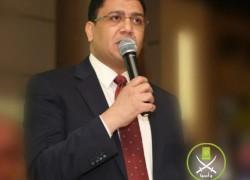- Workers
- November 20, 2008
- 8 minutes read
Report: 1.25 Million Workers Participated In 2007 Demonstrations

The first annual report of the Egyptian Workers and Trade Union Watch referred to the fact that the expansion of the labor movement is an evidence of the failure of the official union organization in playing its role in defending the interests of the workers.
The report pointed out the numerous issues that were the subject of the labor protests in 2007 such as the issue of the temporary employees who had spent several years in the service and being exploited by the employer and the management, the demand to have allowances, bonuses and incentives, and the right of medical treatment.
The report added that the workers also protested to demand providing jobs, housing, and finally repealing confidence of the union committee for not supporting the workers in their demands. They also protested against the deprivation of the maternity leave, and demanded to increase the premium of the fellowship fund and the premium of the end-of-service.
The workers also protested against preventing Kafr El-Sheikh fishermen from fishing in Burllus Lake and endangering their lives, as well as transferring the microbus stations in Behera and Alexandria, and transferring markets in Suez , and protested also against the lack of clean drinking water and the increase in the fishing fees.
The report confirmed that 2007 witnessed the largest number of protests by workers compared to the previous years, as the number of protests reached 756, while it reached 266 protests in 2006, and 202 protests in 2005, and 266 protests in 2004.
The number of those who participated in these protests reached one million and 218 thousand citizens throughout 23 counties; including 16 fields of the work fields and various industries, the workers resorted to different methods of protest for about 813 times.
The report also stressed that the women’s participation in the labor protests was effective at all levels, and that they played a positive role in the negotiation; which had a significant influence on the success of the protests.
The report also revealed that protests spread to include civil servants in the state bodies such as: the real estate tax officials, teachers, doctors, nurses, workers and conductors in Suez, Ministry of Religious Endowments, manpower, Al-Azhar teachers, and they extended to include new groups of protesters (cleaning workers in Giza and Qalubyia).
The report confirmed that the focus of the protests was remarkably on spinning and weaving industry, including means of transportation and communications, energy, food- industries, paper and printing industry, the press and media, then tourism, medical, educational, commercial, agricultural sectors and, finally, sectors of the government officials who have not protested since 1919 revolution, and other groups of fishermen and stations’ workers in several governorates.



